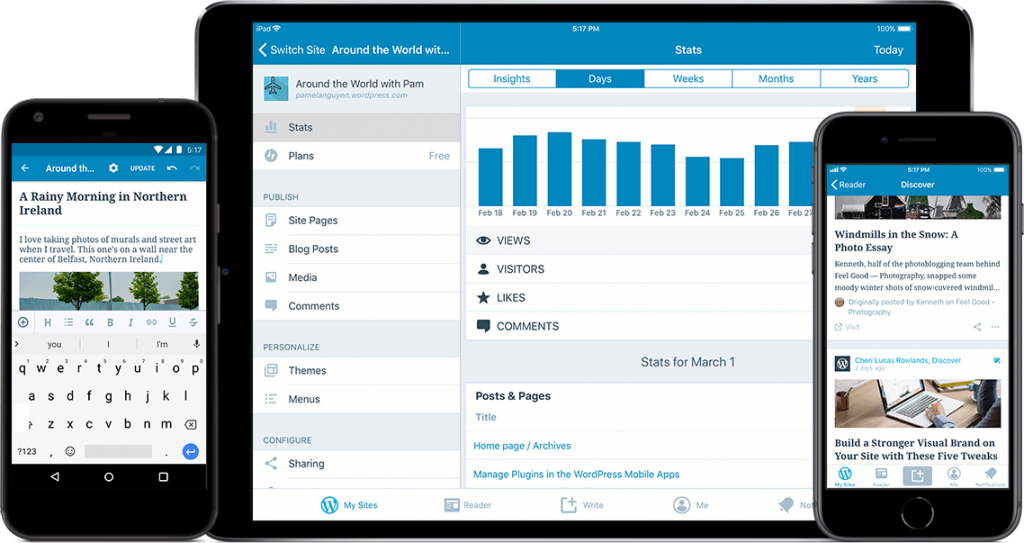According to WordPress, more than 409 million people view more than 23.6 billion pages each month and users produce 69.5 million new posts and 46.8 million new comments every month. It also powers more than 25% of the world’s websites.

Whether it’s personal blogs or major magazines and news organizations such as The New Yorker and the BBC, WordPress is gradually eating the internet and it’s not stopping. In 2017 its ubiquity is expected to increase further and it may even eat the world. Even more importantly it is the CMS that Forbes itself uses.
This report from Forbes,
For contributors to this site such as myself, it is a publishing platform that allows me not only to write easily, it also has simple bells and whistles (as well as more complicated ones) that add content to my work, add links to appropriate places and has the facility to include images and even tweets. While it takes some time getting used to, for me it IS the internet.
For some time now, however, it has been a little like the Wild West with hundreds of WordPress suppliers in a more-or-less unregulated industry with no widely acknowledged qualifications. In many cases, a monkey could do it, but that has changed hugely over the past three years; the numbers don’t lie.
There are thousands of so-called widgets, plugins and themes that are just as important for a one-person blogger than the world’s largest publishers. Gartner’s recent pace-layered application strategy shows that organisations can accelerate their innovation by choosing an array of systems that support business requirements on long-, medium- and short-term timescales.
Systems that maximise connectivity between the pace layers offer organisations competitive advantage. WordPress’ ubiquity has driven it to enjoy a rich ecosystem of connectivity and integration, something that the baked-in WordPress REST API now extends that connectivity infinitely. This is why things will accelerate in 2017.
WordPress’ success as CMS of choice for brands like Conde Nast and News International as well as the forementioned publishers speaks louder than the often-repeated myths of limited functionality and security concerns. Corporates are now looking at the license fees, proprietary IP and jack-of-all-trades approach of enterprise platforms.
One UK company that is passionate about the evolution and progression of WordPress from its origins as a simply blogging platform is Pragmatic, based in the maturing tech hub of Brighton, based on the coast 50 miles south of London.
Other companies in the city doing great work include local poster boy social media monitoring company Brandwatch and, according to market analyst Beauhurst, 1,500 other technology companies.
Pragmatic is increasingly rapidly after outgrowing its current offers and believes it is the open source nature of the platform, which is owned by the community and its easy integration with other platforms that make it the popular product it is.
Moreover, the company is seeing a huge difference in the quality of inbound big brands and existing client brands who are finally tapping into its potential.
“Over the past couple of years we’ve seen a sharp uptick in enquiries from large corporate and enterprise clients that are integrating WordPress as the CMS component within a larger digital marketing platform programme.
“They are asking serious questions about the value they really bring to organisations for whom digital is increasingly not only a core competency, but a bottom-line asset and critical competitive advantage,” said David Lockie, Founder, Pragmatic Web.
These adoptions of huge brands means that 2019 is likely to see the WordPress bandwagon carry merrily along.

